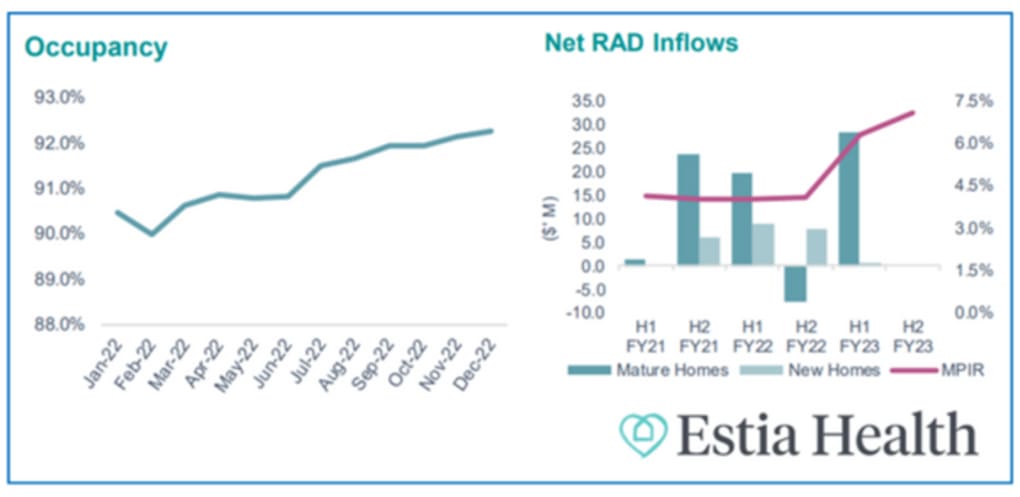The listed residential aged care provider is proving that you can make a profit in residential care – but occupancy and quality accommodation and service are key drivers for success, says its CEO Sean Bilton.
As we reported, Estia Health has delivered a strong Half Yearly result, returning to a $9.6 million NPATA which is being paid out as 3.7cps fully franked dividend to shareholders.
Speaking to The Weekly SOURCE, Sean credited the organisation’s strong focus on occupancy and quality portfolio for the positive result.
“Occupancy is incredibly important as a driver of not just revenue, but the ultimate financial sustainability of the results,” said Sean.
“In our presentation, we talked about a 1% increase in occupancy equals about $8 million in revenue under the new AN-ACC, with 55-60% of that flowing through to EBITDA, and we are getting closer to where we were previously.”
Occupancy is currently sitting at around 88% across the sector, putting Estia Health well ahead of the average.
“Pre-COVID, this business was consistently in 93.5 to probably 94% range, and our spot occupancy as of last Friday was at 92.9%.
“So, we are getting closer back to those levels, and closing that gap is about the recovery of Victoria, which is coming along and has improved a further 2.5% in the end of the half year to 17 February.”
Quality acquisitions
Quality accommodation is also an important factor in maintaining higher occupancy, particularly to meet the higher expectations Baby Boomer generation, Sean added.
Estia Health’s most recent acquisitions – of Premier Health Care’s four aged care homes last year and its newly announced 120-bed Ballarat home – reflect the group’s focus on newer high-quality homes that fit within its operational clusters.
“I think the quality of the asset for any acquisition we look at is critical,” said Sean.
“Certainly, there is a size element that is part of the consideration, but for us it is about the quality of the accommodation and the service provision.
“We know the expectations of the next generation that will intersect with us, which is predominantly that Baby Boomer generation which is coming, are going to be very different.
“We have a fundamental view that to be competitive in an environment post-reform that is all about transparency, competition, quality, the deregulation of places by ACAR, the quality of your portfolio is going to matter, and that has been a real attractor to both of those acquisitions we have done.”
Looking ahead, Sean says the provider is now focused on the recommendations of the Independent Health and Aged Care Pricing Authority (IHACPA) in July, and the introduction of mandated care minutes in October.
Estia Health has had 24/7 RNs for five years and is tracking in line with the sector average for care minutes, currently estimated as between 180 and 185 minutes by StewartBrown.
“There is some work to be done around the care minutes, and working through the availability of the workforce so how we respond to that requirement over the next six months or so is a key focus for us,” Sean stated.
Pricing Authority
He also believes that the work of the Pricing Authority will be critical to future sustainability and investment in the sector.
“Traditionally, we have seen indexation of the 1-1.5% range which, when your EAs and your staff costs are typically going up at double that amount, obviously creates an environment where your margin is going backwards.”
“25% of the aged care beds in Australia require major refurbishment or replacement and that will require capital to be attracted to the sector. To do that, we need to be able to demonstrate to the people that hold that capital that there are sustainable returns.”
Estia Health is certainly showing that these kind of returns are possible.










